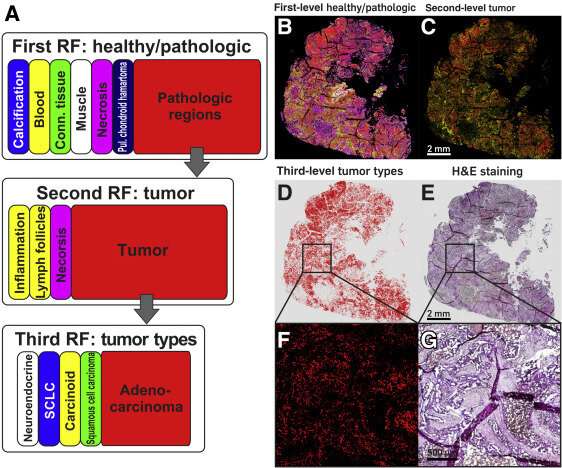
Lung tumors are divided into various types, such as small cell lung cancer, adenocarcinoma and squamous cell carcinoma. Many rare tumor types and sub-types also exist. This diversity hampers reliable rapid diagnostic methods in everyday clinical practice. In addition to histological typing, the tumor samples also need to be comprehensively examined for certain changes at a DNA level. “Detecting one of these mutations is important key information that influences both the prognosis and further therapeutic decisions,” says co-author Professor Reinhard Büttner, head of the Institute of General Pathology and Pathological Anatomy at University Hospital Cologne.
Patients with lung cancer clearly benefit when the driver mutations have previously been characterized: for instance, tumors with activating mutations in the EGFR (epidermal growth factor) gene often respond well to tyrosine kinase inhibitors, whereas non-EGFR-mutated tumors or tumors with other mutations, such as KRAS, do not respond at all to this medication. The differential diagnosis of lung cancer previously took place with immunohistochemical staining of tissue samples and a subsequent extensive genetic analysis to determine the mutation.
Fast and reliable measuring technique
The potential of infrared imaging, IR imaging for short, as a diagnostic tool to classify tissue, called label-free digital pathology, was already shown by the group led by Klaus Gerwert in previous studies. The procedure identifies cancerous tissue without prior staining or other markings and functions automatically with the aid of artificial intelligence (AI). In contrast to the methods used to determine tumor shape and mutations in tumor tissue in everyday clinical practice, which can sometimes take several days, the new procedure only takes around half an hour. In these 30 minutes, it is not only possible to ascertain whether the tissue sample contains tumor cells, but also what type of tumor it is and whether it contains a certain mutation.
Infrared spectroscopy makes genetic mutations visible
The Bochum researchers were able to verify the procedure on samples from over 200 lung cancer patients in their work. When identifying mutations, they concentrated on by far the most common lung tumor, adenocarcinoma, which accounts for over 50 percent of tumors. Its most common genetic mutations can be determined with a sensitivity and specificity of 95 percent compared to laborious genetic analysis. “For the first time, we were able to identify spectral markers that allow for a spatially resolved distinction between various molecular conditions in lung tumors,” explains Nina Goertzen from PRODI. A single infrared spectroscopic measurement offers information about the sample which would otherwise require several time-consuming procedures.
A further step towards personalized medicine
Source: Read Full Article